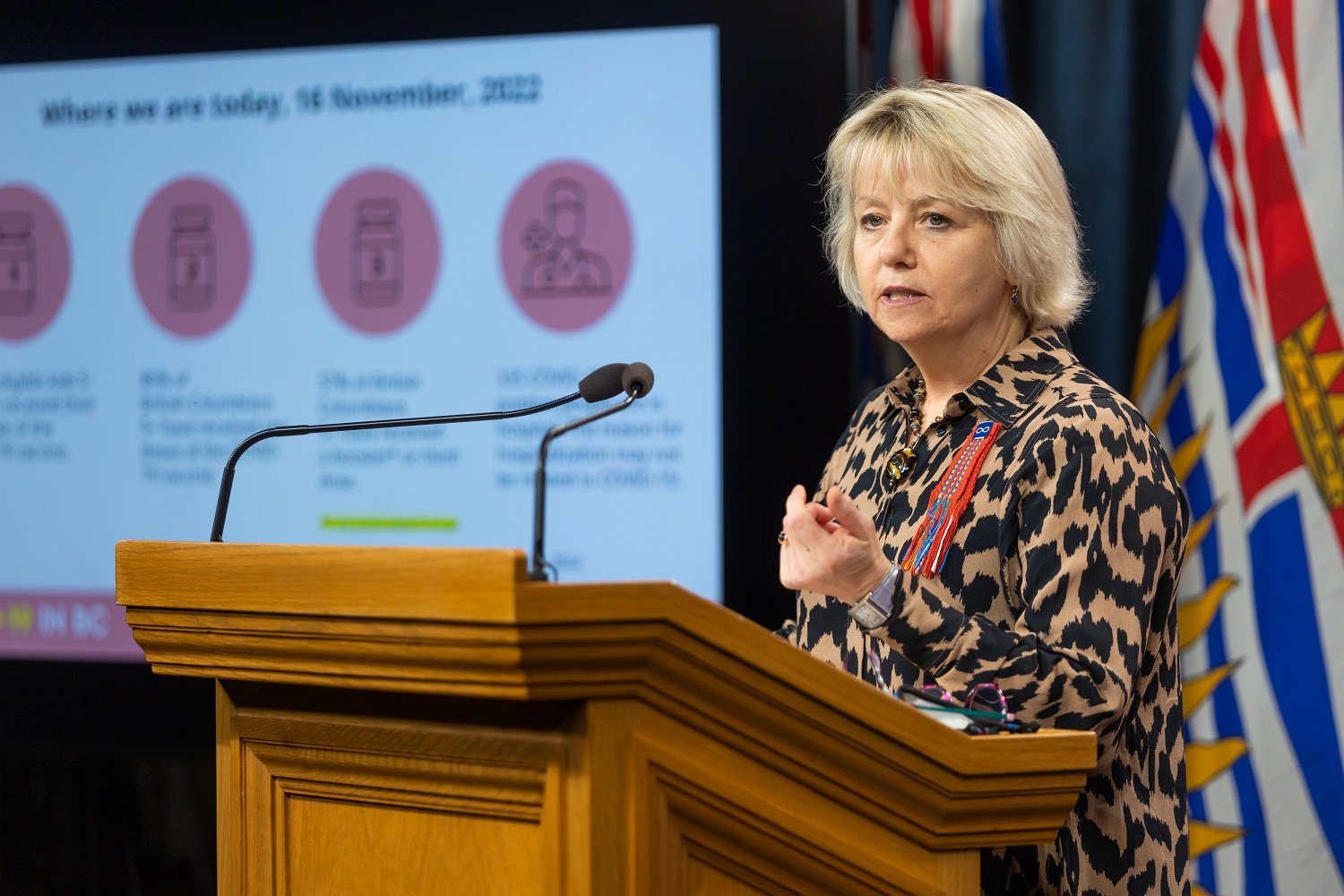The "COVID-19 Lessons Learned Review," an operational review of the provincial government’s response to the COVID-19 pandemic, was submitted to Public Safety Minister and Solicitor General Mike Farnworth on Sept. 23.
It wasn’t released to the public until Friday afternoon — the time of the week when embarrassing reports are traditionally made public in hopes no one will notice.
Not a chance. It’s far too important to be left as a dust catcher on some archival shelf. Lessons Learned is a very useful history of the first two years of the pandemic. It’s also an indictment of the lessons that the Horgan/Eby government refused to learn.
Written by three ex-civil servants, Lessons Learned uses a classic form of the bad news message. I taught business writing for 40 years and the bad news message was a key lesson.
The idea, I told my students, is to exploit the way we read in English. We focus most sharply at the beginnings and ends of sentences, of paragraphs, and of whole documents. That’s where to put the strongest words and phrases to convey your message. We may read the middle stuff, but not with the same emotional investment, and we don’t respond as strongly to it.
So a bad news message, I told my students, needs some insulation. Start with something positive or at least neutral: Thank you for coming in for an interview. It was a pleasure to meet you. Then deliver the bad news: The position you interviewed for has now been filled by a person who more closely meets our needs. Then conclude with something positive or neutral: We’ll keep your resume on file for any possible future openings.
The praise-blame-praise formula
I don’t know if my students actually followed my advice in their careers, but the report’s authors certainly learned the same lesson and they applied the principle in writing it.
So the executive summary (which is all most people read of a long report) starts with praise: “Overall, despite being unprepared for a provincewide emergency the Government of British Columbia’s response to the COVID-19 pandemic was strong, showing resilience, balance and nimbleness that should give British Columbians confidence in its ability to respond to future provincewide emergencies.”
In a bullet-point list of findings, the executive summary repeats the formula, with “universal support” and “strong praise” for some items before gently mentioning “concerns about communications” and “the importance of strong relationships with stakeholders,” “gaps in provincial government programs” and concluding with “the challenge of enforcing public health orders.”
The formula continues with each of the sections in the summary — public trust, reparation, decision-making, communications, implementation and Indigenous impacts.
And the executive summary concludes, “B.C. had a strong and effective response to the pandemic that bodes well for its ability to respond effectively to the next event. Government and society pulled together to do what needed to be done. Government was nimble and resilient.”
Lessons Learned is a very competent report in many ways.
The COVID-19 timeline is useful in sorting out the jumble of events since the first cases were reported in Wuhan, China on Dec. 31, 2019.
The analysis of interdepartmental friction throws light on backstage problems rarely mentioned by the duet of provincial health officer Dr. Bonnie Henry and Health Minister Adrian Dix.
Stuck on ‘kind, calm, safe’
Much of the success and failure of B.C.’s response was due to the government’s communication, and the lack of it. The report praises Dix and Henry’s approach as “calm, competent and apolitical” and “very effective in assuaging the fears of the public.” Henry in particular became a celebrity and her slogan became a local catchphrase: “Be kind, be calm, be safe.”
But as the pandemic evolved, her approach didn’t change. “The later communications breakdowns,” the report says, “contributed to an erosion of trust.” Whenever events took a turn for the worse, Henry shrugged them off as “a challenge.” When the whole planet battled one new strain after another, Henry always reassured us that we were “in a good place.”
As we began to learn more about the virus and how to protect ourselves, Henry and Dix seemed slow to grasp new findings and explain them to the public.
As a result, the report says, “Over time, changes in public health guidance and orders were interpreted by many as evidence of incompetence or lack of trustworthiness.”
What the report didn’t say
For all its strengths, Lessons Learned has some glaring omissions. Charlie Smith, former editor of the Georgia Straight, posted results on his Substack of a word search he’d done on the Lessons Learned report: not once does it mention terms like “airborne,” “brain injury,” “cardiovascular” and “excess mortality.” “Long COVID” gets one passing mention.
Yet we have known for a long time that COVID-19 is an airborne cardiovascular disease that causes brain injury and other effects in people who contract even “mild” cases. (I might add that the report, like the government, uses “restrictions,” a pejorative term, when “protections” would have been more accurate.)
Lack of transparency, the report says, resulted in poor explanations for changes in policy as well as restrictions in data provided. Information was kept from the public on grounds of privacy and stigmatization.
Sometimes this was necessary: “People could be stigmatized if their privacy were compromised. Cowichan Tribes and other First Nations experienced this with racist attacks following disclosure of outbreaks in their communities.”
But sometimes important information is buried deep in some government website.
To find current data on the pandemic, for example, you must go first to the BC Centre for Disease Control and click through to COVID-19. Scroll down to “Data” and click through yet again, where you find mostly archived materials.
To see information like the numbers on the current dashboard, click through to “Respiratory Diseases” and you’ll find the dashboard, the latest situation and weekly reports, and even a mortality page showing COVID-19 has been the fifth leading cause of death in B.C. this year.
These pages require more digging than most people are willing to do, assuming they even know where to start. So when we turn to the report’s section on public input, it’s unsurprising that the public and many civil servants were very annoyed at the government’s communication failures.
“This part of the report,” the authors explain, “summarizes input gathered from the public through a survey, from government through written internal assessments prepared by ministries and agencies as well as interviews with senior public service officials and from input gathered from stakeholders through interviews and written submissions. We also engaged with Indigenous individuals and organizations.”
In other words, they were hearing not just from the public, but from government ministries, health-care unions and municipal and Indigenous governments — the people directly involved with implementing the government’s orders.
‘Extreme vitriol’
The authors make it clear that their survey was not representative of the whole population. They note that a public opinion research poll showed 60 to 70 per cent of us were happy with the government’s response. “In our survey,” they tell us, “less than 20 per cent agreed government had done a good job.”
They also report two important themes in their survey’s responses:
- A vast majority of respondents want a review of the actual decisions made to respond to the pandemic, which was beyond the scope of this review.
- The extreme level of vitriol directed at decision-makers by many respondents was shocking.
Many respondents, the authors write, invoked the World Economic Forum, Big Pharma and “secret government agendas,” as well as complaining about the loss of their freedom and Charter rights due to government actions.
Survey responses were sometimes evenly divided. For example, respondents seemed to be evenly split on whether “it was easy to find government’s COVID-19 information.”
And sometimes responses were overwhelmingly negative.
Information was clear and easily understood? No, said 57 per cent.
Government services have continued to be provided during the pandemic? Not so, said 52 per cent.
Did we trust COVID-19 information from the government? Three out of four respondents did not.
Did the government respond quickly and effectively to each wave of the pandemic? Two out of three disagreed.
And finally, had the B.C. government managed the pandemic well? Three out of four said it had not.
The assessments of Indigenous respondents were even more negative; for example, 87 per cent disagreed that the government had handled the pandemic well.
Respondents were clearly angry at the government, but not for a single set of reasons. Some thought the government had crushed the economy; others thought vulnerable populations like older people and the immunocompromised had been abandoned in the rush to open the economy up again.
And that is why the bad news is buried in the document, and why the document was released after two long months — and on a Friday afternoon.
Damned if you do, damned if you don’t
I suspect that the only lesson the present NDP government has learned is not to be in power when the next disaster rolls in. New governments disregard former governments’ plans, as Trump ignored the pandemic plans left by the Obama administration.
Politicians around the world — even “zero-COVID” Xi Jinping — now know that they’ll be damned if they do something to prevent the next pandemic and damned if they do nothing at all. They also know their populations will be very reluctant to accept any kind of preventive measures, even masking.
That may explain governments’ generally torpid response to the present onslaught on health-care systems, especially due to respiratory diseases in children. The resurgence of flu, RSV and other viruses is largely the result of loosening public health “restrictions” that kept people free of flu and colds during the early years of the pandemic.
In B.C., public health morphed into embracing “personal responsibility” in the first week of April, when restrictions were relaxed on gatherings, restaurants, travel, vaccination status and masking. The old, the young and the immunocompromised were effectively cast loose. To protect hospitals and emergency departments, we were told to “flatten the curve” — until we weren’t and the system was indeed overwhelmed.
Lessons Learned consoles us that our response to the pandemic was no worse than those of other provinces and sometimes better.
That was a low bar and this report offers little encouragement that our future responses will be better. ![]()
Read more: Rights + Justice, Coronavirus, BC Politics
















Tyee Commenting Guidelines
Comments that violate guidelines risk being deleted, and violations may result in a temporary or permanent user ban. Maintain the spirit of good conversation to stay in the discussion.
*Please note The Tyee is not a forum for spreading misinformation about COVID-19, denying its existence or minimizing its risk to public health.
Do:
Do not: